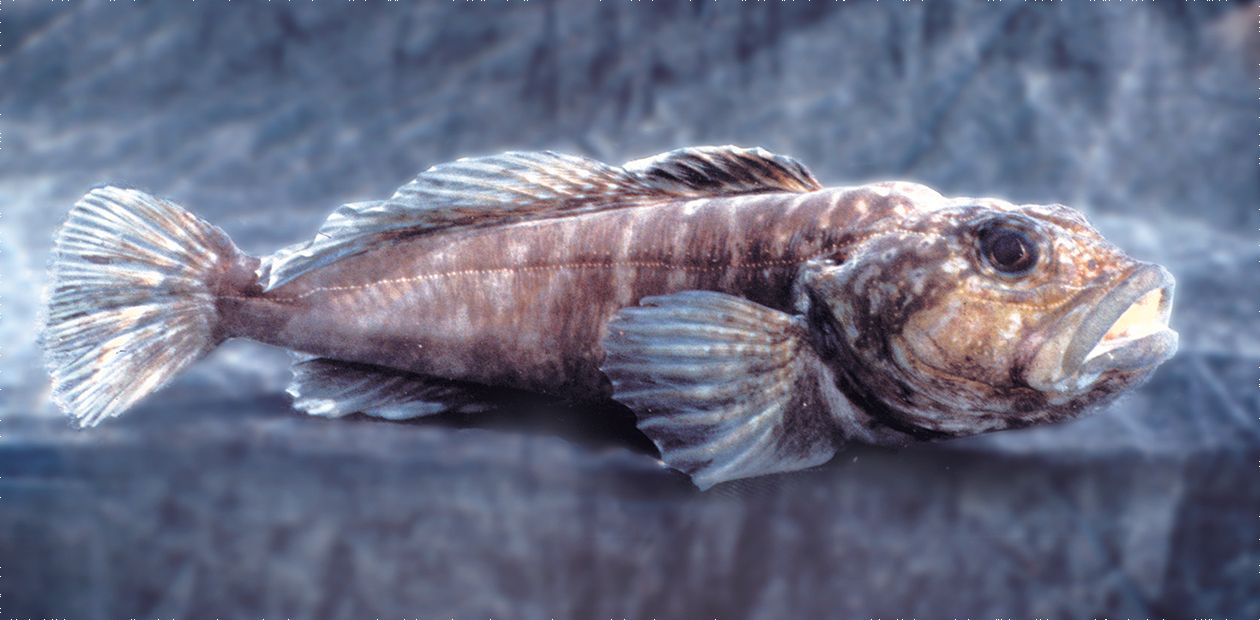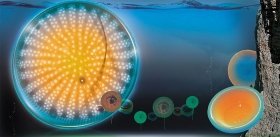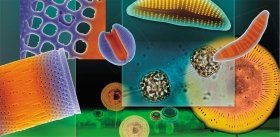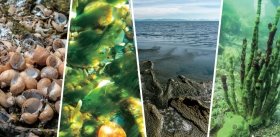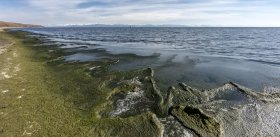Mysterious Fish of Lake Baikal
Ancient and deep Lake Baikal is every angler’s and naturalist’s dream. Large depths (300 m–1700 m) make up about 80 % of the lake area. The waters are highly oxygenated and are rich in fish throughout. Scientists from all over the world seek to learn more about cottoid fish, which are endemic to Lake Baikal — that means that they do not occur anywhere else. This is the only place where deepwater freshwater fish live.
First Things First
About 60 fish species and subspecies live in Lake Baikal, of which 55 are native, while six were introduced by man and are new to the environment. The coastal strip and shallow bays are where fish, which are known to everybody and are common in other Siberian lakes and rivers, live. These are perch, pike, roach, eel-pot, dace, loach, and crucian carp, to mention a few. Although these species live in Lake Baikal, they spawn in the rivers that flow into it. They are food fish, which are successfully fished with seine nets and fishing nets. No doubt, the most valued and renowned is the Baikal omul (Coregonus autumnalis).
Based on hydroacoustic surveys, the biomass of omul communities in the lake is in excess of 30,000 tons, while only 3,000 tons of it are caught annually, which amounts to less than 10%. Local people consume it boiled, fried, smoked, but it is especially tasty when freshly salted. Wooden tanks have always been the traditional way to salt the omul in. There is a telling line in a song that celebrates Lake Baikal: «Glorious vessel, a tank full of omul».
The omul is fished with seine nets and fishing nets; however, early in spring it can be caught using a fishing rod. Late in March to early April, when the sun begins to shine brightly above still ice-covered Baikal, is the time when algae and invertebrates appear in large numbers. Hungry after winter, the omul gate crashes the party and is easily caught. It becomes really food crazy. And it comes to get caught! Fishermen unafraid of the dangerous ice arrive in their cars to catch the omul. Not seldom do they go down, but those who do not really get what they come for, because a lucky one has all chances to come up with a large bag of first-rate omul.
In summer, when the upper layers of water are warmer and abundant in foods, omul tends to come closer to the water surface. It is caught using a search light mounted onboard a boat. Attracted by radiance, aquatic invertebrates rush to the pool of light. Omuls are often slow to appear, but eventually they succumb to the light. They bite so actively that one can catch 2 or 3 specimens at a time using a fishing rod equipped with several hooks down the line.
Umber, two species of which live in Lake Baikal, and Baikal sturgeon are delicious too. Black umber is one of the most sought-after species among the fishermen. It lives ubiquitously across the coastal strip, feeding on bottom invertebrates (gammaridae, molluscs, chironomidae, etc.), and in spring, when caddis flies emerge as adults, the umber ascends to the upper layers and catches the insects from the surface. The umber causes ripples on the surface of the lake and locals say that fishing may be successful if a light sinker is used.
Black umber spawns in springtime, in rapid clear-water rivers. During the spawning period the males look like dandies: they grow a high dorsal fin covered with dark-red dots set in rows, and on the sides of their glaucous, grey blue bodies appear bright pink spots. Females do not look that glamorous smart. White umber lives at greater depths (50 m–150 m) and most frequently occurs around the delta of the Selenga River. It has a broad light body, the front part of which is covered with small black dots. It is very fatty and is an excellent choice for fish-soup. Black umber cannot be caught with a fishing rod, fishing nets and occasionally creeps are used instead.
Acipenseriform species normally live in the salt water. They normally live in salt water, for example, in the Caspian Sea, and spawn to fresh water rivers. Baikal sturgeon lives in fresh water and spawns to fresh water. The Baikal sturgeon takes at least 19 to 20 years before it reaches maturity. Although this fish grows slowly, a mature specimen can be up to 1 m in length and 70 kg in weight. Admittedly, such specimens are rare. During the World War II the population of the Baikal sturgeon was decimated as people used it as a food source. It is now a protected species. Because its growth and maturation are slow, the sturgeon has not yet fully recovered and for that reason its fishing has been banned.
Overall, there are 17 species of food fish in Lake Baikal. However, most Baikal fish (60 %) is not food fish. These are exotic cottoid fish, endemic to the lake.
Freshwater Dwellers of The Deep
The ancestors of cottoid fish emerged in the Far-Eastern seas of Russia. During the Miocene, about 20 million years ago, they began to invade rivers, adapting to life in fresh water. Moving down the rivers, they ended up in Lake Baikal, first in its shallow waters, then in deep waters and the water column. All the rivers and lakes of Eurasia, including the Japanese islands, feature 14 cottoid species, while Lake Baikal has 33.
Most cottoid species of Lake Baikal (84 %) live at the bottom. Some are perched high on the bottom surface and are quite unresponsive. They can even be touched by fingertips, and when touched, they pop up, dart 40 – 80 cm away, go down and freeze again. Some species bury themselves in sediments and mud with only their round eyes protruding. These fish can often be found under rocks, in cracks and holes. In 1977, from the Paisis scientific submarine at a depth of 800 meters scientists observed how a red sculpin (Procottus jeittelesii) excavated a hole in the mud, burrowed itself in it, put its head out and attacked passing.
Bottom cottoid fish have varying colors. Coastal species are normally gray or gray green, with dark irregular spots on their sides, some fish are emerald green. Deeper down, the fish become grey with dark red stripes, uniform brown, pink, orange, and glaucous.
Deepwater species live at a constant water temperature of 3.50 C. At such low temperatures they grow slowly and spawn only at an age of 6–8 years. Eggs are large and orange in color. For example, the smalleye sculpin (Abyssocottus korotneffi), which is only 10 cm in length and about 10 g in weight, spawns 20–30 eggs 3.5–3.7 mm in diameter. This species is noted for dwarves, who become mature at an age of 4 years, while their normal-sized conspecifics mature later. They are quite tiny then, only 5 mm in length and 1.3 g in weight, and only spawn 5–13 eggs.
Deep Down in The Dark of The
Since some cottoid fish species live at large depths, where no sunlight can reach the question arises: how do they navigate in the dark and how do they find food? The fish not only have five sense modalities (vision, hearing, taste, smell, and touch), which all invertebrate animals have, but also a sixth sense, the so-called seismic sensor. This system is responsive to water vibrations occurring due to movements of waves, fish, and invertebrate animals.
This system usually appears in the form of canals, which open outward using a special anatomical feature. When looked at closely, the head and the skin are dotted with little holes which are the orifices of the system. Inside the canals there are sensing ‘buds’ (neuromasts), connected to nerve endings which submit information on the vibration frequencies to the brain. The canals may occasionally be missing, and the sensing buds are then located immediately on the fish skin. In the Lake Baikal settings, the seismic sensor of most deepwater bottom species consists of superficial neuromasts. With their seismic sensors thus developed, at large depths these fish better sense vibrations caused by predators, food organisms or conspecifics.
At large depths, the cottoid fish are continuously affected by a high hydrostatic pressure, which can be up to 16,000 kPa! In collaboration with American scientists we performed experimental research aimed at discovering the pressure the fish can survive. As turned out, the deepwater cottoid fish can withstand up to 25,000 kPa, which is much higher than in the deepest part of Lake Baikal. For comparison, the shallow-water fish could withstand only 5,000 kPa. These experiments prove that deepwater fish have adapted to their environment and have developed the features necessary to live at such high hydrostatic pressures.
How They Do It
Lake Baikal is inhabited, apart from the bottom cottoid fish, by three bathypelagic species. They spend a part of the day in the water column, and the other part on the bottom. All of them have typical long pectoral fins used as oars to paddle with. Because of these long fins one of the species, Cottocomephorus inermis, is called the longfin. Another, Cottocomephorus grewingki, is referred to as the yellowfin, as it features bright, lemon-yellow pectoral fins that the males grow during mating.
Like the other bottom cottoid fish, the yellowfin sculpin spawns under rocks in coastal waters at depths ranging between 40 cm and 2 m. A male first searches for an appropriate place under a rock. The rock should be large enough not to be disturbed by the waves, rest on a sand or small pebble bed; and there should be a cavern underneath of about 4 cm. When the male finds such a place, he enters the cavern, works a small depression in the sand with his fins, makes himself comfortable and defends the place from the rivals. He stays there day and night seeking the attention of a female.
Suddenly she appears. The male starts making circles around her, moves his pectoral fins, the color of his head changing from olive drab to black, and even begins to emit sounds (!). To be able to hear these sounds, which are imperceptible to the human ear, we used a hydrophone. Eventually, the courtship is noticed and the male is accepted: the female is ready to spawn. They lie side by side bellies up, the male holds the female tight with his pectoral fin, and the female begins to spawn.
Normally one yellowfin sculpin female spawns up to 2,000 eggs. The male releases milt and attaches the eggs to the vault of the cavern. This process lasts 1–1.5 hours. After complete spawning, the female stays in for a short period of time and then abandons the nest. The male rests and in two hours is ready for more.
Normally one yellowfin male mates with 2–7 females over a few days. Once we were lucky to come across a nest with 21 egg layings, but such occurrences are extremely rare. After spawning the male defends the egg layings until larvae have hatched. We deployed an underwater camera near the nests safeguarded by the males. Funnily enough, they displayed quite different attitudes towards their duty. Some were just model fathers, who took care of the egg layings all the time, working with their fins for a better fresh water flow and a better supply of oxygen. Others were noted for irresponsible behavior: they would abandon their nests, flee elsewhere and, overall, take little care of their progeny. Some would bite off eggs from the egg layings and get away with it. However, despite these examples of blatant irresponsibility, the egg survival rate is very high and reaches 96–98 %. Larvae appear as small creatures, 5–6 mm in length, that can swim nonetheless. On their very first days they keep close to the shores, then flock together and let the streams spread them throughout the lake waters. They grow up and the whole story repeats itself.
Rumor Has It…
Oh, it does. Amazing as all the cottoid fish may be, the prize for uniqueness should go to the golomyanka fish (Comephorus spp.), who spend their lifetime in the water column. There are two golomyanka species known to exist: big golomyanka (Comephorus baicalensis) and small golomyanka (Comephorus dybowski).
They have no swim bladder, which is a buoyancy organ for any fish. But how can they survive? They have very thin porous bones, containing few minerals, which considerably reduces fish body weight. They have long pectoral and dorsal fins, whose area is twice as much as the body area; ventral fins are missing; muscles and body cavity are rich in fat (up to 40 % of fish body weight). During World War II local people melted and consumed the fat also, it has been used in Tibetan medicine.
Observations made by the author using ‘Paisis’ submersibles suggest that during the day the golomyanka fish begin to occur at a depth of 135 meters as lone specimens sinking slowly with their heads down. The largest schools each of about 20 fish occur near the bottom. What they are up to is not known, but it is clear that the observed fish actively swim in all directions two meters above the bottom.
The golomyanka fish live on animal plankton. That is why at night they ascend from the bottom to the upper water layers, and return at dawn. This species stands out among the other freshwater fish in that, given our northern latitudes, its representatives are viviparous with internal fertilization; however, it is unknown how this actually occurs.
Larvae develop in the maternal body cavity. Big golomyanka larvae appear in August, small golomyanka larvae in February–March, under the ice. They are absolutely transparent, about 10–12 mm in length, actively swim and occur in the water column. Not only are they eaten up by omul, but also by mature golomyanka fish, who, in turn, are consumed by the seal. Golomyankas account for over 90% of the seal’s diet. There is thus little exaggeration in the statement that the very emergence and existence of this endemic animal became possible thanks to these tiny fish!
Although golomyankas are not large fish (small golomyanka never exceeds 15 mm in length, big golomyanka–30 mm), their population in Lake Baikal tops any other species’. Their biomass amounts to 165 thousand tons, or 70 % of the total fish weight in the lake. Nevertheless, they are not considered to be food fish, for they never occur as large schools. It took us two hours to catch 1 kg of golomyanka in a sweeping trammel net at depths of 500–700 m. In autumn this figure may occasionally rise up to 10 kg, because for unknown reasons at this season golomyankas occur quite close to the shores.
Rumor has it that live small golomyankas are so transparent that their internals and circulatory system shine through. Legend has it that one can read a newspaper through a golomyankas. We tried our best, but to no avail. When dead, golomyankas are absolutely dull. Some writers claim that due to the high fat content, staying in the sun may result in a complete meltdown of this fish! The most startling myth exposed that, to spawn larvae, golomyankas zoom to the water surface, their bellies breaking due to the pressure drop, and the larvae escape. After that the fish, with their bellies open, keep afloat until cast ashore.
These myths are particularly common among writers. There is no surprise because they are fed by the unusual appearance and amazing lifestyle of the fish in Lake Baikal.


